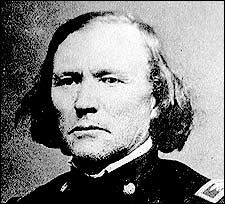 |
| Irvin Walker died of illness a few months after he "joined" |
Most of my relatives who served in the Union Army survived. My mother's grandfather,Granville Coleman, was born in Virginia but his family moved to Missouri when he was a child. He joined the Missouri Cavalry when he was 16 and fought at the Battle of Pilot Knob, the opening engagement of Gen. Sterling Price's raid on Missouri in 1864. Granville fell off his horse and was dragged along the ground. He was hospitalized for much of the remainder of the war.
Granville's father-in-law, William Nicholas Rogers, was a lead miner from England. He served in the Missouri Infantry. They were fighting in Louisiana in February, 1863, when Nick developed such severe lung disease that he was transported by ambulance boat up the Mississippi to St. Louis. Although Nick and Granville both received small pensions for their ailments, they lived well into the 20th Century.
Robert B. Walker, my father's great-grandfather, went to Springfield, Ill., in February, 1864, to join the Illinois Infantry, although he was most likely rounded up in Missouri by Union soldiers and forced to join. He survived the war but died in 1877, the same year his daughter, Dad's grandmother, was born. She was orphaned five years later when her mother died as well.
Robert's brother, Irvin B.Walker, was 36 and planning to sit this one out when he was "recruited" in the fall of 1864 to serve in the 48th Missouri Infantry guarding the railroad from Rolla to St. Louis. He became sick at Jefferson Barracks in St. Louis and died in January, 1865, about three months after he joined. He was one of 120 in the regiment to die of illness that winter.
Even more of the Confederate cousins died. The Coleman relatives who stayed behind in Virginia joined the Confederacy. John was killed at Richmond in 1862. Brothers Joseph and Thomas were wounded at Gettysburg and became prisoners of war.
Andrew Tullock, one of my mother's gggreat uncles, lost his legs in the war, came back and lived with his brother but died a few years later. Another uncle Andrew J. Tullock died as a Confederate soldier at the Battle of Pea Ridge in Arkansas in 1862. His brother Samuel was killed in battle a year later.
Oh the futility of it all! I can't help thinking about that '60s folk song, "Where have all the Flowers Gone?" If you are out decorating graves today, sing a verse for me.
"...when will they ever learn? When will they ever learn?"


